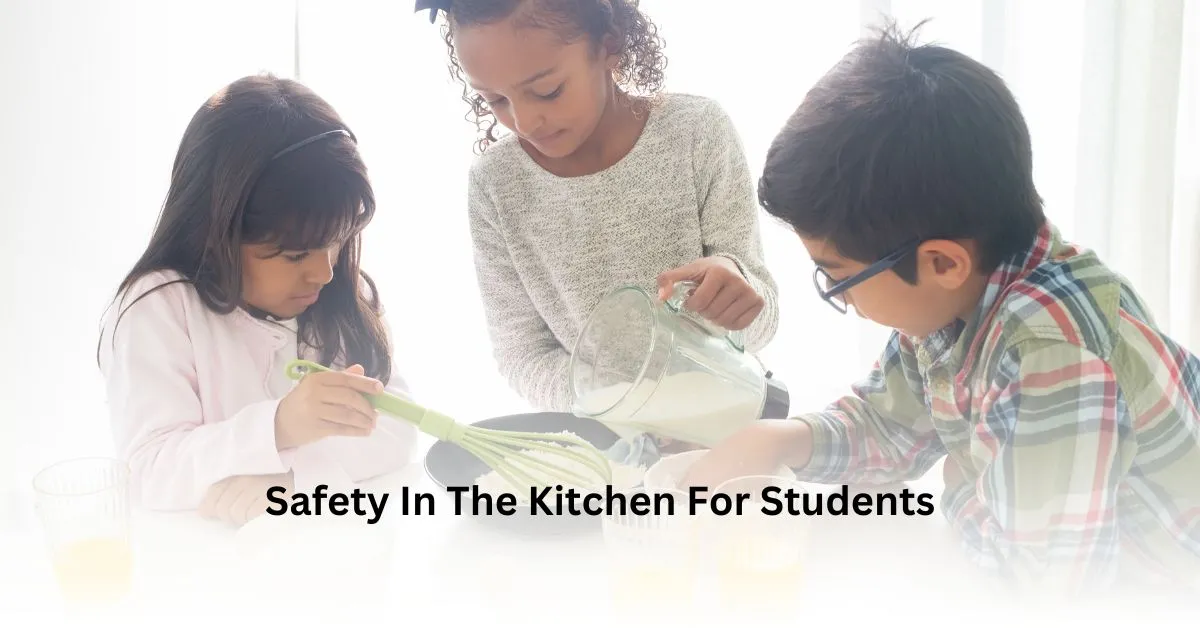The kitchen stands as both a playground and a laboratory. It’s a place where creativity meets precision, and where delicious meals are crafted with care. However, amid the excitement of culinary adventures, safety should always remain a top priority, especially for students who are just beginning to navigate the culinary world. In this comprehensive guide, we will delve deep into the realm of safety in the kitchen for students, providing them with essential knowledge and practical advice to ensure their time in the kitchen is not only enjoyable but also safe.
Proper Attire and Personal Hygiene
In the dynamic world of culinary arts, where creativity and precision intertwine, the kitchen serves as both a stage and a laboratory. It’s a place where flavors meld, textures harmonize, and culinary dreams come to life. However, amid the whirlwind of culinary exploration, one aspect often overlooked is the importance of safety in the kitchen for students. In this comprehensive explanation, we will delve into why these practices are crucial for maintaining a clean, safe, and efficient kitchen environment.
Understanding the Importance
Before delving into the specifics of safety in the kitchen for students, it’s essential to grasp why these practices are so integral to the culinary experience. Firstly, adhering to proper attire and personal hygiene standards promotes a clean and sanitary environment. In a space where food is prepared and served, cleanliness is paramount to prevent contamination and foodborne illnesses. By wearing appropriate attire and maintaining good personal hygiene, chefs and kitchen staff help ensure the integrity and safety of the food they produce.
Moreover, safety in the kitchen for students requires attention to proper attire and personal hygiene, which also play a significant role in preventing accidents and injuries. Loose clothing, dangling jewelry, and unkempt hair pose serious safety hazards, especially when working with hot surfaces, sharp knives, and heavy equipment. By dressing appropriately and practicing good hygiene, individuals reduce the risk of accidents such as burns, cuts, and slips, thus creating a safer working environment for themselves and their colleagues.
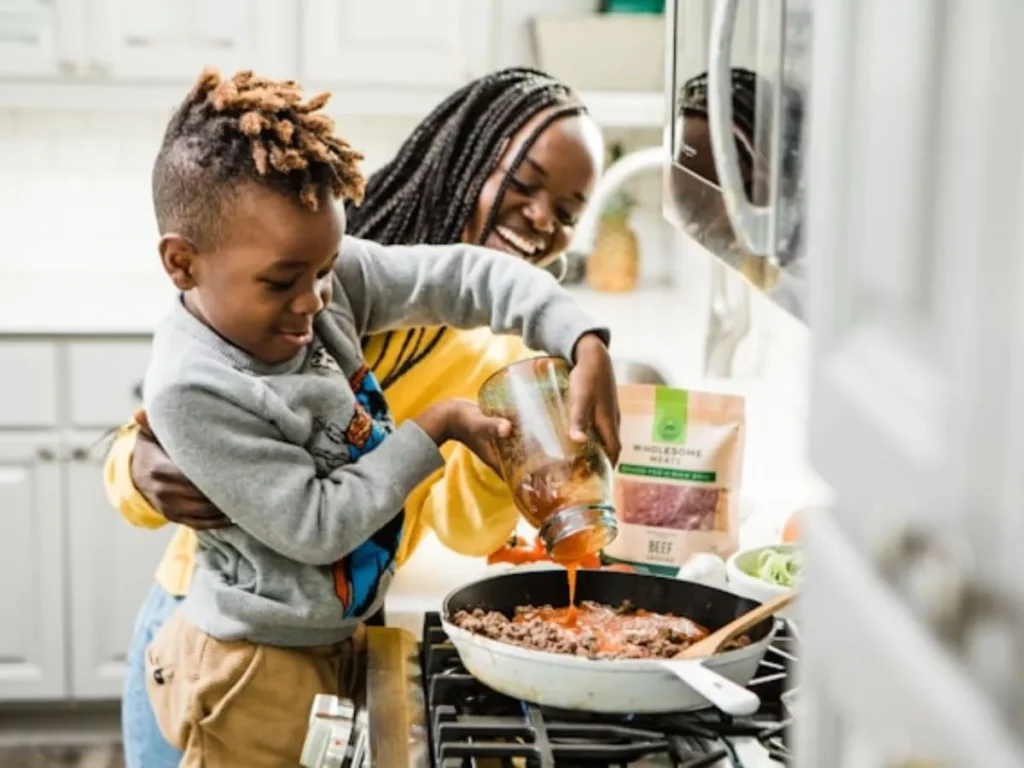
Activities
To reinforce the importance of proper attire and personal hygiene, engaging activities can be employed to educate students and kitchen staff effectively.
Identifying Appropriate Attire
In this activity aimed at promoting safety in the kitchen for students, students are presented with various images of kitchen attire, including aprons, closed-toe shoes, and hairnets. They are then tasked with matching each item to its corresponding description. This activity not only familiarizes students with essential kitchen attire but also emphasizes the importance of wearing the right clothing for the task at hand. Aprons protect clothing from spills and splatters, closed-toe shoes provide stability and protection, and hairnets prevent hair from falling into food, all contributing to a safer and more hygienic kitchen environment.
Hygiene Practices Matching
In this activity focusing on safety in the kitchen for students, students are provided with a list of hygiene practices, such as washing hands before handling food and tying back long hair. They are then asked to match each practice to its appropriate scenario. This activity encourages students to consider the role of personal hygiene in food safety and highlights the importance of practices such as handwashing in preventing the spread of harmful bacteria and contaminants. By understanding when and how to implement proper hygiene practices, students can minimize the risk of foodborne illnesses and maintain a high standard of kitchen sanitation.
Discussion Questions
To stimulate critical thinking and further reinforce the importance of proper attire and personal hygiene, engaging discussion questions can be posed to students and kitchen staff.
Why is it important to wear appropriate attire in the kitchen?
- Proper attire not only protects clothing from spills and splatters but also reduces the risk of accidents and injuries. Aprons, closed-toe shoes, and hairnets create a barrier between the individual and potential hazards in the kitchen, promoting safety and hygiene.
How does proper personal hygiene contribute to kitchen safety?
- Proper personal hygiene practices, such as handwashing and tying back long hair, help prevent the spread of harmful bacteria and contaminants. By maintaining good hygiene habits, individuals reduce the risk of foodborne illnesses and ensure the integrity of the food they prepare.
Can you think of any additional attire or hygiene practices that should be followed in the kitchen?
- Encourage students to brainstorm additional attire and hygiene practices that contribute to kitchen safety and cleanliness. Examples may include wearing non-slip shoes to prevent slips and falls, using gloves when handling raw meat to prevent cross-contamination, and regularly sanitizing kitchen surfaces and equipment to maintain a hygienic environment.
By engaging in these activities and discussions focused on safety in the kitchen for students, students and kitchen staff gain a deeper understanding of the importance of proper attire and personal hygiene in the kitchen. Armed with this knowledge, they can confidently navigate the culinary world, prioritizing safety and sanitation in every culinary endeavor.
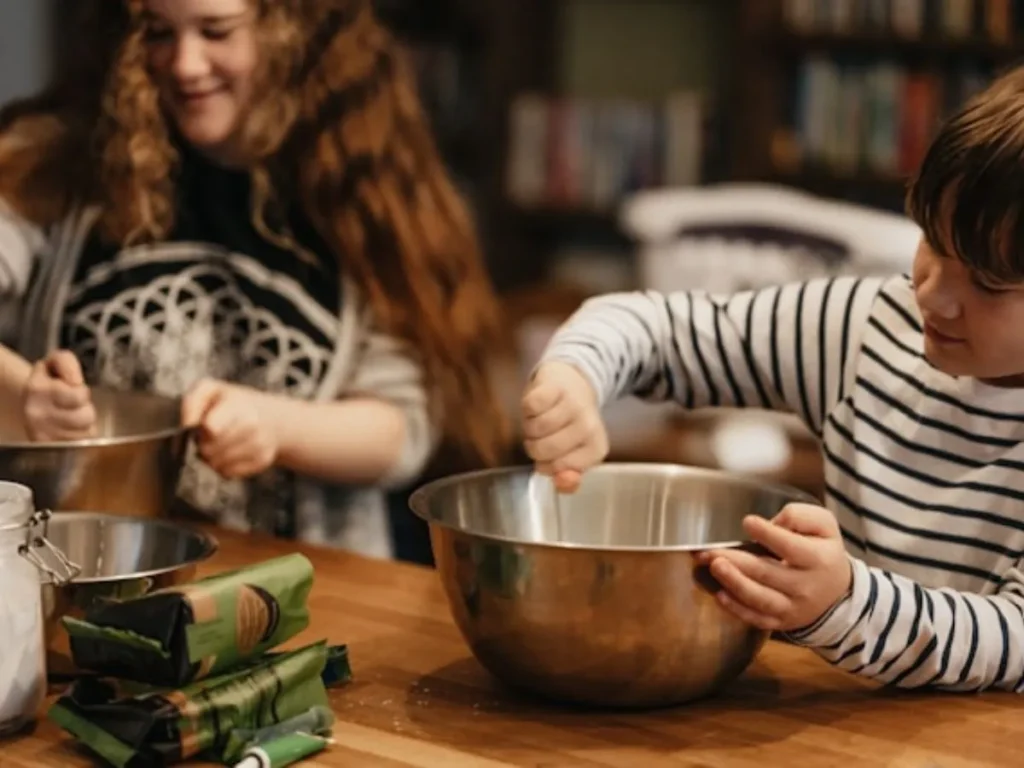
Safe Handling of Kitchen Tools and Equipment
In the dynamic realm of culinary arts, where creativity and precision converge, safety in the kitchen for students becomes paramount. Kitchen tools and equipment serve as indispensable companions on the journey to culinary mastery. From the humble knife to the mighty blender, these tools are the conduits through which chefs bring their culinary visions to life. However, amidst the excitement of culinary exploration, it’s essential to recognize that these tools, if not handled properly, can pose significant risks to safety. In this comprehensive explanation, we will explore the importance of safe handling of kitchen tools and equipment, emphasizing the practices and precautions necessary to ensure a safe and enjoyable culinary experience for students.
Exploring Tool Safety
Before delving into the specifics of safety in the kitchen for students regarding tool handling, it’s crucial to understand why this aspect of kitchen safety is so vital. In the culinary world, tools are not just instruments; they are extensions of one’s hands, enabling chefs to chop, slice, and dice with precision and finesse. However, without proper handling, these tools can quickly become sources of danger, leading to accidents and injuries. By exploring the principles of tool safety, students can develop the skills and knowledge necessary to wield kitchen tools effectively and safely, ensuring their culinary journey is both enjoyable and hazard-free.
Activities
Tool Handling Matching
In this activity focusing on safety in the kitchen for students, students will be presented with a list of common kitchen tools, including knives, peelers, and graters. They will then be tasked with matching each tool to its corresponding safe handling technique. This activity serves to familiarize students with the proper techniques for handling various kitchen tools, emphasizing the importance of grip, posture, and attention to detail in ensuring safety.
For example, when handling a knife, students will learn the importance of keeping fingers away from the blade and using a controlled, steady motion to avoid slips and cuts. Similarly, when using a peeler or grater, students will practice maintaining a firm grip and applying even pressure to prevent accidents, thereby fostering a safe learning environment in the kitchen.
Appliance Safety Quiz
In this activity centered on safety in the kitchen for students, students will engage in a multiple-choice quiz focused on the safe usage of kitchen appliances, such as ovens, stovetops, and blenders. The quiz will cover topics such as proper operation, maintenance, and safety precautions associated with each appliance. By testing students’ knowledge of appliance safety, this activity reinforces the importance of understanding and adhering to manufacturer guidelines and safety protocols.
For example, students may be asked to identify the correct temperature range for baking in an oven or the proper procedure for safely operating a stovetop burner. Additionally, the quiz may include questions about potential hazards, such as electrical safety and fire prevention, to encourage students to think critically about appliance safety in a variety of contexts, thereby empowering them to navigate the kitchen environment with confidence and awareness.

Scenario-Based Questions
To further reinforce the principles of tool safety and appliance usage, students will be presented with scenario-based questions that challenge them to apply their knowledge and problem-solving skills in real-world situations.
What precautions should you take when using a sharp knife?
- When using a sharp knife, it’s essential to exercise caution and follow proper safety protocols to prevent accidents. Some precautions to consider include:
- Always keep fingers away from the blade and use a cutting board to stabilize the item being cut.
- Maintain a firm grip on the knife handle and use controlled, steady motions to avoid slips and cuts.
- Store knives in a designated knife block or rack when not in use to prevent accidental contact.
How can you ensure the safe operation of kitchen appliances?
- To ensure the safe operation of kitchen appliances, students should adhere to the following guidelines:
- Read and follow the manufacturer’s instructions and safety guidelines for each appliance.
- Regularly inspect appliances for signs of damage or wear, such as frayed cords or loose parts, and promptly repair or replace any damaged components.
- Keep appliances clean and free of food debris to prevent malfunctions and fire hazards.
- Never overload electrical outlets or extension cords, and always unplug appliances when not in use.
Describe a situation where improper tool handling could lead to an accident.
- Improper tool handling can lead to accidents in various scenarios, such as:
- Using a dull knife: When attempting to cut through tough or slippery ingredients with a dull knife, chefs may exert excessive force, increasing the risk of slips and cuts.
- Mishandling hot pots and pans: Failing to use oven mitts or pot holders when handling hot pots and pans can result in burns and scalds.
- Ignoring safety guards on kitchen appliances: Disregarding safety features such as guards and shields on appliances like slicers and mixers can lead to accidental contact with moving parts, resulting in injuries.
By exploring these scenarios and discussing potential hazards, students gain a deeper understanding of the importance of proper tool handling and appliance safety in the kitchen. Armed with this knowledge, they can approach their culinary endeavors with confidence, knowing they have the skills and awareness necessary to stay safe and prevent accidents.
Fire Safety
In the bustling environment of the kitchen, where flames dance and pots simmer, safety in the kitchen for students is of utmost importance as the threat of fire looms ever-present. From minor flare-ups to potentially catastrophic blazes, understanding how to effectively tackle kitchen fires is paramount to ensuring the safety of both individuals and property. In this detailed explanation, we will delve into the intricacies of fire safety in the kitchen, exploring activities and critical thinking questions designed to educate and empower students to respond confidently and effectively in the event of a fire emergency, thus fostering a culture of preparedness and safety awareness in the kitchen environment.
Tackling Kitchen Fires
Before delving into the specifics of fire safety activities, it’s essential to recognize the gravity of the situation regarding safety in the kitchen for students. In the fast-paced environment of the kitchen, where heat and combustible materials abound, the risk of fire is a constant reality. Whether it’s a small grease fire or a larger blaze, knowing how to respond swiftly and decisively can mean the difference between a minor mishap and a major disaster. By instilling a culture of fire safety awareness and preparedness, individuals can minimize the risk of fire-related accidents and mitigate the potential damage caused by kitchen fires, ensuring the safety and well-being of everyone in the kitchen environment.
Activities
Identifying Fire Hazards
In this activity focused on safety in the kitchen for students, participants will examine various kitchen scenarios and identify potential fire hazards. From cluttered countertops to overloaded electrical outlets, students will learn to recognize the factors that can contribute to the outbreak of a kitchen fire. Once identified, students will brainstorm strategies for mitigating these hazards, such as implementing proper storage practices, ensuring adequate ventilation, and regularly inspecting and maintaining kitchen appliances. By actively engaging in this activity, students develop a heightened awareness of fire hazards in the kitchen and learn practical measures to prevent their occurrence, thus empowering them to create a safer cooking environment for themselves and others.
Fire Safety Plan Creation
In this collaborative activity centered on safety in the kitchen for students, participants will work in groups to develop a step-by-step fire safety plan outlining procedures for extinguishing different types of kitchen fires. Drawing upon their knowledge of fire safety principles and practical experience gained from the previous activity, students will devise comprehensive response strategies tailored to various fire scenarios. This may include identifying the appropriate fire extinguisher for different types of fires, establishing evacuation routes and assembly points, and designating roles and responsibilities for each member of the team.
By actively participating in the creation of a fire safety plan, students not only reinforce their understanding of fire safety protocols but also develop invaluable teamwork and leadership skills essential for managing emergency situations effectively, thus ensuring a safer kitchen environment for all.

Critical Thinking Questions
To further stimulate critical thinking and deepen students’ understanding of fire safety principles, thought-provoking questions can be posed to encourage reflection and discussion.
Why is it important to keep flammable objects away from the stove?
- Flammable objects, such as kitchen towels, wooden utensils, and paper towels, pose a significant fire hazard when placed in close proximity to the stove. The heat generated by the stove can ignite these materials, leading to rapid flame spread and potentially catastrophic consequences. By keeping flammable objects away from the stove, individuals reduce the risk of accidental fires and create a safer cooking environment.
What steps should you take in the event of a grease fire?
- In the event of a grease fire, it’s crucial to respond swiftly and appropriately to prevent the situation from escalating. Some steps to take include:
- Turning off the heat source to remove the ignition factor.
- Covering the flames with a metal lid or baking sheet to smother the fire.
- Using a Class B fire extinguisher to suppress the flames if the fire cannot be contained with a lid.
- Never attempting to extinguish a grease fire with water, as it can cause the flames to spread.
How can you prevent kitchen fires from occurring in the first place?
- Preventing kitchen fires requires a proactive approach to fire safety and risk management. Some preventive measures include:
- Regularly cleaning cooking surfaces and appliances to remove grease and food debris.
- Ensuring that cooking areas are well-ventilated to prevent the accumulation of flammable vapors.
- Monitoring cooking activities closely and never leaving the stove unattended while in use.
- Installing and maintaining smoke detectors and fire extinguishers in the kitchen to provide early warning and suppression capabilities.
By pondering these critical thinking questions, students gain insight into the underlying causes of kitchen fires and learn practical strategies for preventing their occurrence. Armed with this knowledge, they can approach their culinary endeavors with confidence, knowing they have the skills and awareness necessary to navigate the kitchen safely and effectively.
Proper Food Handling and Storage
In the bustling world of culinary exploration, safety in the kitchen for students is paramount, where flavors dance and aromas tantalize, food takes center stage as the heart and soul of the kitchen. However, amidst the culinary delights, it’s essential to recognize the potential risks lurking in the shadows—risks posed by improper food handling and storage. In this comprehensive explanation, we will delve into the importance of safeguarding against contamination through proper food handling and storage practices, equipping students with the knowledge and skills necessary to protect themselves and others from foodborne illnesses, thus ensuring a safe and wholesome culinary experience for all.
Safeguarding Against Contamination
Before we delve into the specifics of safety in the kitchen for students regarding proper food handling and storage, it’s crucial to understand the gravity of the situation. Food, while a source of nourishment and joy, can also harbor harmful bacteria and pathogens if not handled and stored correctly. These microorganisms, if allowed to proliferate, can lead to foodborne illnesses ranging from mild gastrointestinal discomfort to severe and potentially life-threatening conditions. By understanding the principles of food safety, students can mitigate these risks and ensure the integrity and safety of the food they prepare, thereby promoting a healthy and secure culinary environment for everyone involved.
Activities
Food Storage Categorization
In this activity focusing on safety in the kitchen for students, participants will categorize various foods based on their storage requirements, such as refrigeration or room temperature. By classifying foods according to their perishability and optimal storage conditions, students gain a deeper understanding of the factors influencing food safety. Perishable items such as dairy products, meats, and fresh produce require refrigeration to slow bacterial growth and maintain freshness, while non-perishable items such as grains, canned goods, and dry spices can be safely stored at room temperature. Through this activity, students learn to make informed decisions about proper food storage, minimizing the risk of spoilage and contamination and promoting a safer culinary environment for all.
Cross-Contamination Scenarios
In this activity centered on safety in the kitchen for students, participants will analyze different scenarios involving the potential for cross-contamination and identify strategies for preventing it. Cross-contamination occurs when harmful bacteria from raw foods are transferred to ready-to-eat foods or surfaces, increasing the risk of foodborne illness.
By examining scenarios such as cutting raw chicken on a cutting board and then using the same board to chop vegetables without proper cleaning, students learn about the importance of maintaining separate cutting boards for raw and ready-to-eat foods, as well as the necessity of thorough cleaning and sanitizing of kitchen surfaces and utensils. Through critical thinking and problem-solving, students develop the skills necessary to prevent cross-contamination and ensure the safety of the food they prepare, thereby fostering a culture of food safety and hygiene in the kitchen environment.
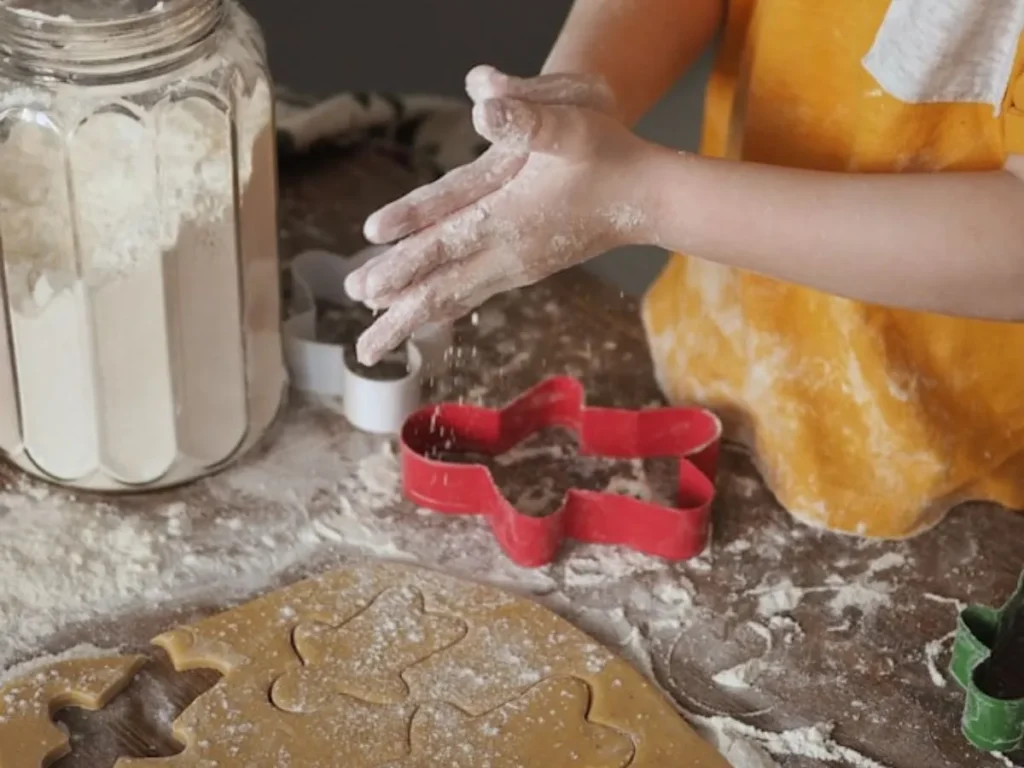
Discussion Prompts
To further reinforce the principles of food safety and stimulate critical thinking, engaging discussion prompts can be posed to students.
Why is it important to refrigerate perishable foods promptly?
- Refrigerating perishable foods promptly slows bacterial growth and helps maintain freshness, reducing the risk of spoilage and foodborne illness. Perishable items such as meats, dairy products, and fresh produce are particularly susceptible to bacterial contamination if left at room temperature for extended periods.
How can you prevent cross-contamination when preparing meals?
- To prevent cross-contamination, students should adhere to the following guidelines:
- Use separate cutting boards and utensils for raw and ready-to-eat foods to prevent the transfer of harmful bacteria.
- Wash hands thoroughly with soap and water before and after handling raw foods, especially meats and poultry.
- Clean and sanitize kitchen surfaces and utensils between uses to remove any traces of raw food contamination.
- Store raw meats and poultry on the lowest shelves of the refrigerator to prevent drips and spills from contaminating other foods.
What are some common signs of food spoilage?
- Common signs of food spoilage include:
- Changes in appearance, such as discoloration, mold growth, or slimy texture.
- Foul odors or unusual smells emanating from the food.
- Off-flavors or sour tastes indicating bacterial or fungal growth.
- Gas production or bulging packaging, which may indicate bacterial contamination and potential foodborne illness.
By engaging in these activities and discussions, students gain a deeper understanding of the importance of proper food handling and storage in maintaining food safety. Armed with this knowledge, they can approach their culinary endeavors with confidence, knowing they have the skills and awareness necessary to protect themselves and others from foodborne illnesses. Through diligence and attention to detail, students can ensure that every meal they prepare is not only delicious but also safe and wholesome.
Cleanliness and Organization
In the dynamic world of safety in the kitchen for students, where creativity meets precision, the kitchen serves as both a stage and a laboratory. It’s a place where flavors mingle, textures harmonize, and culinary dreams take flight. However, amidst the whirlwind of culinary adventures, it’s essential to recognize the critical role that cleanliness and organization play in ensuring a safe and efficient workspace. In this comprehensive explanation, we will explore the significance of maintaining a clean and organized kitchen environment, equipping students with the knowledge and skills necessary to minimize the risk of accidents and ensure a pleasant cooking experience, thus fostering a culture of safety and excellence in the culinary realm.
Maintaining a Safe Workspace
Before delving into the specifics of cleanliness and organization, it’s crucial to understand why these aspects are so integral to kitchen safety. A clean and organized kitchen is not only more aesthetically pleasing but also more efficient and safer to work in. By incorporating good cleanliness and organization habits into their routine, students can create an environment conducive to productivity and creativity while minimizing the risk of accidents and injuries.
Activities
Kitchen Cleanliness Checklist
In this activity, students will create a checklist of essential cleanliness tasks to be performed before, during, and after cooking. By identifying and prioritizing key cleanliness tasks, students develop a systematic approach to maintaining a clean and hygienic kitchen environment. Tasks may include washing hands before and after handling food, wiping down countertops and surfaces, sanitizing utensils and equipment, and disposing of food waste properly. By adhering to the checklist, students ensure that no aspect of cleanliness is overlooked, thus minimizing the risk of cross-contamination and foodborne illnesses.
Workspace Organization Challenge
In this activity, students will participate in a timed challenge to organize a messy kitchen workspace, focusing on the proper storage of utensils, ingredients, and appliances. Through hands-on experience, students learn the importance of organization in maximizing efficiency and safety in the kitchen. By organizing utensils, ingredients, and appliances in designated areas, students create a streamlined workflow that minimizes clutter and reduces the risk of accidents such as spills and falls. Additionally, proper organization ensures that essential items are readily accessible, enabling students to focus on their culinary tasks without unnecessary distractions.
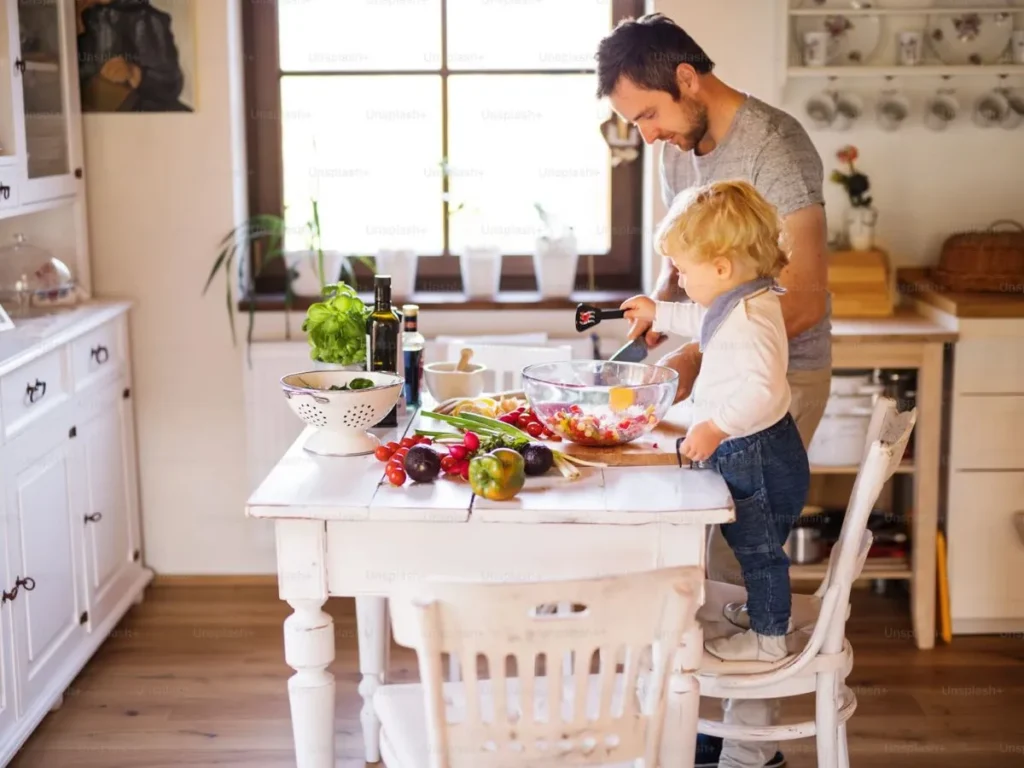
Reflection Questions
To deepen their understanding of the importance of cleanliness and organization in the kitchen, students will engage in reflection questions that prompt critical thinking and self-assessment.
How does a clean and organized workspace contribute to kitchen safety?
- A clean and organized workspace reduces the risk of accidents and injuries by minimizing clutter and creating clear pathways for movement. By ensuring that utensils, ingredients, and appliances are properly stored and readily accessible, students can navigate the kitchen with ease and focus on their culinary tasks without the distraction of disorganization. Additionally, a clean workspace promotes hygiene and sanitation, reducing the risk of cross-contamination and foodborne illnesses.
What are some potential hazards associated with a cluttered kitchen?
- Potential hazards associated with a cluttered kitchen include:
- Increased risk of slips, trips, and falls due to obstructed pathways and uneven surfaces.
- Difficulty accessing essential utensils and equipment, leading to frustration and inefficiency.
- Higher likelihood of spills and accidents due to overcrowded countertops and workspace.
- Greater risk of cross-contamination and foodborne illnesses due to improper storage and handling of ingredients.
Describe the steps you would take to clean up a spill in the kitchen.
- When cleaning up a spill in the kitchen, it’s essential to follow these steps:
- Immediately contain the spill to prevent it from spreading further.
- Use absorbent materials such as paper towels or cloth to soak up excess liquid.
- Clean the affected area with warm water and soap, taking care to remove any residue or debris.
- Disinfect the area with a suitable cleaning solution to kill any bacteria or pathogens.
- Dry the area thoroughly to prevent slips and falls.
- Dispose of any contaminated materials properly and wash hands thoroughly afterward.
By engaging in these activities and reflection questions, students gain a deeper understanding of the importance of cleanliness and organization in maintaining a safe and efficient kitchen workspace. Armed with this knowledge, they can approach their culinary endeavors with confidence, knowing they have the skills and awareness necessary to create a workspace that fosters productivity, creativity, and safety. Through diligence and attention to detail, students can transform their kitchen into a sanctuary of culinary inspiration, where every meal is prepared with care and precision.
Conclusion
In conclusion, the comprehensive exploration of safety in the kitchen for students through the five worksheets has equipped students with essential knowledge and practical skills to navigate the culinary world safely. Let’s summarize the key safety rules covered in these worksheets and reiterate the importance of prioritizing safety in the kitchen.
Summary of Safety In The Kitchen For Students
- Proper Attire and Personal Hygiene: Students learned the importance of wearing appropriate attire, such as aprons and closed-toe shoes, and practicing good personal hygiene, including washing hands before handling food. These practices promote a clean and sanitary environment while preventing accidents and injuries.
- Safe Handling of Kitchen Tools and Equipment: Through activities and quizzes, students familiarized themselves with safe handling techniques for various kitchen tools and appliances. Understanding how to wield knives, peelers, and other tools safely minimizes the risk of accidents and ensures efficient and effective food preparation.
- Fire Safety: Students explored the potential hazards of kitchen fires and learned how to respond effectively in the event of a fire. By identifying fire hazards and creating fire safety plans, students are better prepared to mitigate risks and prevent accidents in the kitchen.
- Proper Food Handling and Storage: Students categorized foods based on their storage requirements and analyzed scenarios to prevent cross-contamination. Understanding the principles of food safety helps students safeguard against contamination and minimize the risk of foodborne illnesses.
- Cleanliness and Organization: Students created cleanliness checklists and participated in workspace organization challenges to maintain clean and organized kitchen environments. A clean and organized workspace not only enhances efficiency but also reduces the risk of accidents and ensures a pleasant cooking experience.
Also Read: Essential Table Manners for Kids
Encouragement for Educators
Educators are encouraged to incorporate these worksheets into their kitchen safety curriculum to provide students with a comprehensive understanding of kitchen safety principles. By engaging in hands-on activities and discussions, students can develop practical skills and critical thinking abilities that will serve them well in their culinary endeavors.
Reminder for Students
As students embark on their culinary journeys, it’s crucial to prioritize safety in the kitchen at all times. Whether they’re preparing a simple meal or experimenting with complex recipes, maintaining a safe working environment should always be their top priority. By adhering to the safety rules and guidelines covered in these worksheets, students can enjoy their culinary adventures with confidence, knowing they have the knowledge and skills to protect themselves and others from harm.
In conclusion, by instilling a culture of safety and responsibility in the kitchen, educators and students alike can create a positive and nurturing environment where culinary creativity can flourish safely. Let’s continue to prioritize safety, both in and out of the kitchen, as we embark on our culinary adventures together.
